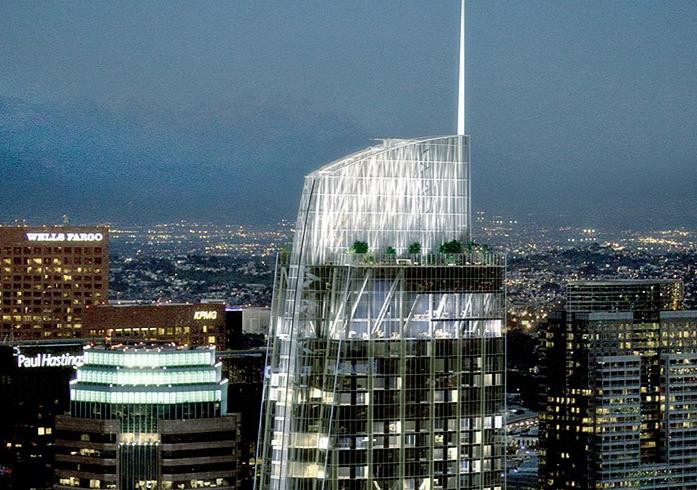The Tall, Skinny, Shining Skyline That L.A. Deserves

For the last forty years, an odd rule from the Los Angeles Fire Department, known as Regulation 10, has required that every skyscraper in the city have a helipad for potential emergency rescues. This is why, architects argue, Los Angeles has a thoroughly medicore skyline. Here are a whole lot of them complaining to the New York Times about Regulation 10:
“The helipad regulation has hindered L.A. from having an iconic, memorable skyline in a city that desperately needs a stronger urban identity,” said Brigham Yen, a downtown realtor who writes a blog, DTLA Rising. “Downtown L.A. now has the opportunity to design visually stunning high-rises with spires that will strengthen its position as an urban center.”
Brenda A. Levin, a Los Angeles architect who has overseen renovations of some of the city’s most historic buildings, said that the restrictions had served only to encourage “mundane architecture.”
Requirement 10 was “an antiquated idea, and it stunts the architecture in a city that is known for design,” said Christopher C. Martin, the tower’s chief architect. “Can you imagine the Academy Awards if all the actors came out and said, in all L.A., we should have flattop haircuts?”
“In tall buildings, all the brush strokes should go up,” Mr. Martin added. “You should accentuate the height. To truncate the top is not attractive.”
Professor Woo said that while some people “dismiss it as only an aesthetic concern,” it was more than that. “That skyline is really crucial to the identity of the city,” he said. “People outside of here don’t realize this has been going on for 40 years — architects adjusted to it.”
Last month, the fire department agreed to drop the rule. This, the architects predictably predict, will allow a thousand spires to bloom, finally giving Los Angeles the cool, extremely distinct skyline that its residents deserve, so they no longer have to concede that point when they’re accosted by someone from New York.
And yet. The building that most immediately led to the re-examination of Regulation 10, the forthcoming the Wilshire Grand Center, the tallest building west of the Mississippi River, with its angular, sloping roof and giant spire, is distinct only in that it looks like it could belong in any random city but Los Angeles; it could just as easily be just another supertall spire shooting up in midtown New York City, another point anonymously poking the sky in the pointy skylines Shanghai or Hong Kong.
The flat top was the Los Angeles hallmark, and a squandered opportunity for distinction and unusual architecture; the spire is an invitation to ascend toward a different kind of bland, gleaming sameness, toward false heights and largely unremarkable stunt architecture. But maybe that suits LA just fine.
